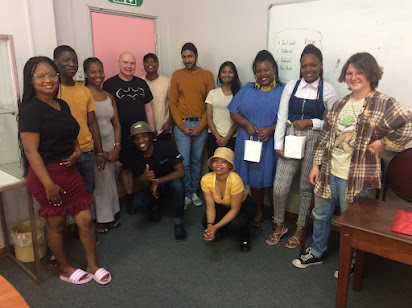By Shorba Harkhu
In recent
years the spreading of misinformation online has become more sophisticated and
prolific (Fielding, 2019).) Once a site is believed to be “credible,” all
information on it is often trusted and taken at face value, and it becomes far
more difficult to counter, even with accurate facts (Fielding 2019). Furthermore,
in this age of fake news, it is difficult to distinguish between credible and
misleading sources of information. One of the most widely used tools for evaluating
information is the CRAAP test, which was developed by a librarian named Sarah
Blakesley in 2004.
The CRAAP
test stands for Currency, Relevance, Authority, Accuracy, and Purpose (Smith,
2017). It is a list of questions to assist in evaluating information. By
applying the CRAAP test, one can filter out unreliable, outdated, or irrelevant
information and focus on the most useful and trustworthy sources.
Criteria for evaluating information
Currency:
the timeliness of the information
·
When was the information published or posted?
·
Has the information been revised or updated?
·
Is the information current or out of date for
your topic?
·
Are the links functional
Relevance:
the importance of the information for your needs
·
Does the information relate to your topic or
answer your question?
·
Who is the intended audience?
·
Is the information at an appropriate level (i.e.
not too elementary or advanced for your needs)?
·
Have you looked at a variety of sources before
determining this is one you will use?
·
Would you be comfortable using this source for a
research paper?
Authority:
the source of the information
·
Who is the author/publisher/source/sponsor?
·
Are the author's credentials or organizational
affiliations given?
·
What are the author's credentials or
organizational affiliations given?
·
What are the author's qualifications to write on
the topic? Can they be verified?
·
Is there contact information, such as a
publisher or e-mail address?
·
Does the URL reveal anything about the author or
source?
Accuracy:
the reliability, truthfulness, and correctness of the content, and
·
Where does the information come from?
·
Is the information supported by evidence?
·
Has the information been reviewed or refereed?
·
Can you verify any of the information in another
source or from personal knowledge?
·
Does the language or tone seem biased and free
of emotion?
·
Are there spelling, grammar, or other
typographical errors?
Purpose: the
reason the information exists
·
What is the purpose of the information? to
inform? teach? sell? entertain? persuade?
·
Do the authors/sponsors make their intentions or
purpose clear?
·
Is the information fact? opinion? propaganda?
·
Follow the money. Who stands to gain from this?
·
Does the point of view appear objective and
impartial?
·
Are there political, ideological, cultural,
religious, institutional, or personal biases?
·
What clues does the format give to the purpose,
audience, quality?
Source: Source:
California State University, Chico, Meriam Library. (2010).
www.csuchico.edu/lins/handouts/eval_websites.pdf
How can we apply CRAAP when teaching?
Our library
databases comprise mainly of credible, peer-reviewed information, so when doing
library instruction we can emphasize that aspect of CRAAP that highlights the
importance of choosing information that is current and relevant. Unfortunately
with websites like Google anyone with a webpage can create content, and one
cannot filter results like we do with our databases. This is when we need to stress
the importance of the CRAAP test.
Fielding, J.
A. (2019). Rethinking CRAAP: Getting students thinking like fact-checkers in
evaluating web sources. College & Research Libraries News 80(11): 620.
Smith, M. D. 2017. Arming Students against Bad
Information. Phi Delta Kappan, 99,
,56-58.



